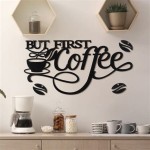How To Hang Wall Decor Without Damaging Walls
Hanging wall decor is a fundamental element of interior design, allowing individuals to personalize their living spaces and express their aesthetic preferences. However, the process of affixing items to walls often poses a dilemma: achieving the desired visual effect while minimizing or eliminating potential damage to the wall surface. This article provides an in-depth exploration of various methods for hanging wall decor without causing lasting harm to walls, focusing on techniques, tools, and preventative measures.
Before delving into specific methods, it is crucial to understand the types of wall surfaces commonly encountered. These include drywall (also known as sheetrock or gypsum board), plaster, wood paneling, brick, and concrete. Each material possesses distinct characteristics and requires different approaches to secure wall decor effectively and safely, while also preventing damage. Drywall, for instance, is relatively soft and easily penetrated, whereas brick and concrete are significantly more durable and require more robust techniques.
Consideration should also be given to the weight of the item being hung. Lightweight items such as small pictures, posters, or decorative paper products necessitate less invasive methods compared to heavier items like large framed artwork, mirrors, or shelving units. Understanding the weight-bearing capacity of the chosen method is essential to prevent the decor from falling and potentially causing damage to the wall or the item itself.
Choosing the Right Hanging Method
Selecting the appropriate hanging method is paramount to preserving wall integrity. Several factors influence this decision, including the wall type, the weight of the item, and the desired aesthetic. Each method offers a unique balance between holding power and the potential for damage.
Adhesive Strips and Hooks: These products are designed for lightweight items and offer a convenient, removable hanging solution. They typically utilize a strong adhesive that adheres to the wall surface and a hook or loop system to hold the decor. These strips and hooks are best suited for smooth, non-porous surfaces such as painted drywall or clean tile. Carefully following the manufacturer's instructions regarding weight limits and surface preparation is essential to prevent the adhesive from failing and causing the item to fall.
The key to successful adhesive strip usage lies in proper surface preparation. The wall must be clean, dry, and free of dust or grease. Wiping the area with isopropyl alcohol before applying the strip can significantly improve adhesion. When removing the strips, it is crucial to pull them slowly and steadily downwards, parallel to the wall surface. This minimizes the risk of tearing the paint or the underlying drywall paper.
Removable Putty and Tapes: These options are ideal for very lightweight items like posters, prints, or small photographs. They offer a temporary hold and are relatively easy to remove. However, their holding power is limited, and they may not be suitable for items that are valuable or easily damaged. Some putties can leave a residue on the wall, so testing a small, inconspicuous area before applying it to the entire item is advisable. Similarly, certain tapes can remove paint, so caution is warranted.
Hook and Loop Fasteners: Similar to adhesive strips, hook and loop fasteners offer a reusable and adjustable hanging solution. They consist of two interlocking surfaces that provide a secure hold. These fasteners are suitable for items that require periodic removal or adjustment, such as calendars or temporary displays. The weight limitations should be carefully observed to avoid failures.
Magnetic Hanging Systems: This method involves attaching a small metal plate to the back of the decor and using a magnetic strip or disc on the wall. This is particularly useful for metal objects or for creating a minimalist look. Magnetic systems offer a clean and damage-free way to display compatible items. However, the strength of the magnet must be sufficient to support the weight of the object.
Proper Installation and Removal
Regardless of the chosen method, proper installation and removal techniques are crucial to preventing wall damage. Rushing the process or using incorrect tools can lead to unsightly holes, chipped paint, or torn drywall paper.
Marking and Leveling: Before applying any adhesive or fastener, accurately mark the desired location of the decor on the wall. Use a level to ensure that the item will hang straight. A pencil is ideal for marking drywall, while masking tape can be used on more delicate surfaces to prevent scratching. Avoid using permanent markers, as they can be difficult to remove.
Applying Adhesive with Precision: When using adhesive strips or hooks, apply them firmly and evenly to the wall surface. Press down for the recommended duration specified by the manufacturer. Avoid applying too much pressure or twisting the strips, as this can weaken the adhesive bond. Allow the adhesive to cure for the recommended time before hanging the item.
Safe Removal Techniques: The way hanging systems are removed impacts the presence, or absence, of damage. For adhesive strips, pulling slowly and straight down, close to the wall, is preferable. For any adhesive residue that remains, there are residue removers available in most hardware stores. When using nails, it’s best to remove these with a claw hammer, inserting cardboard between the wall and hammer to avoid additional damage.
Alternative Hanging Solutions and Preventative Measures
Beyond the methods described above, several alternative hanging solutions and preventative measures can further minimize wall damage.
Picture Rail Systems: Picture rails are molding strips installed near the ceiling from which pictures can be hung using hooks and wires. This is a traditional method that eliminates the need to put holes in the walls. Picture rails offer a flexible and elegant way to display artwork without causing damage.
Leaner Mirrors and Artwork: For larger pieces, consider leaning them against the wall instead of hanging them. This eliminates the need for any fasteners and allows for easy repositioning. Ensure that the leaner is stable and secure to prevent it from falling.
Furniture Arrangements: Strategically arranging furniture can provide alternative display surfaces for artwork and other decor. Placing pictures on shelves, mantels, or sideboards eliminates the need to hang them on the walls.
Wall Preparation: Before hanging any decor, ensure that the walls are properly prepared. Patch any existing holes or imperfections and apply a fresh coat of paint if necessary. This will create a smooth and even surface for the adhesive or fasteners to adhere to, reducing the risk of damage during removal.
Protective Backing: Applying a protective backing to the back of artwork or mirrors can prevent scratches or scuffs on the wall surface. Felt pads or bumpers can be attached to the corners of the item to create a buffer between the decor and the wall.
Testing in Inconspicuous Areas: Before applying any adhesive or other hanging material to a prominent wall surface, test it in an inconspicuous area to ensure that it does not damage the paint or wall covering. This will allow you to assess the effectiveness of the method and identify any potential problems before they become widespread.
By carefully considering the wall type, the weight of the decor, and the available hanging options, individuals can successfully display their personal touches without inflicting unnecessary damage to their walls. Employing proper installation and removal techniques, along with implementing preventative measures, will help maintain the integrity of the wall surfaces and preserve the aesthetic appeal of the living space.

Hang Art Without Nails How To

11 Ways To Hang Stuff On Walls Without Leaving Marks Wikihow

11 Ways To Hang Stuff On Walls Without Leaving Marks Wikihow

11 Ways To Hang Stuff On Walls Without Leaving Marks Wikihow

11 Ways To Hang Stuff On Walls Without Leaving Marks Wikihow
How To Hang Stuff Without Damaging Your Walls Allstate

5 Friendly Ways To Display Art Without Damaging Your Walls

Hang Art Without Nails How To

Best Way To Hang Pictures Without Nails Making Home Pretty

How To Create A Gallery Wall Without Hammer And Nails Little Big Bell Decor Pictures Hanging







